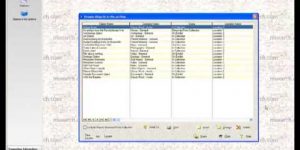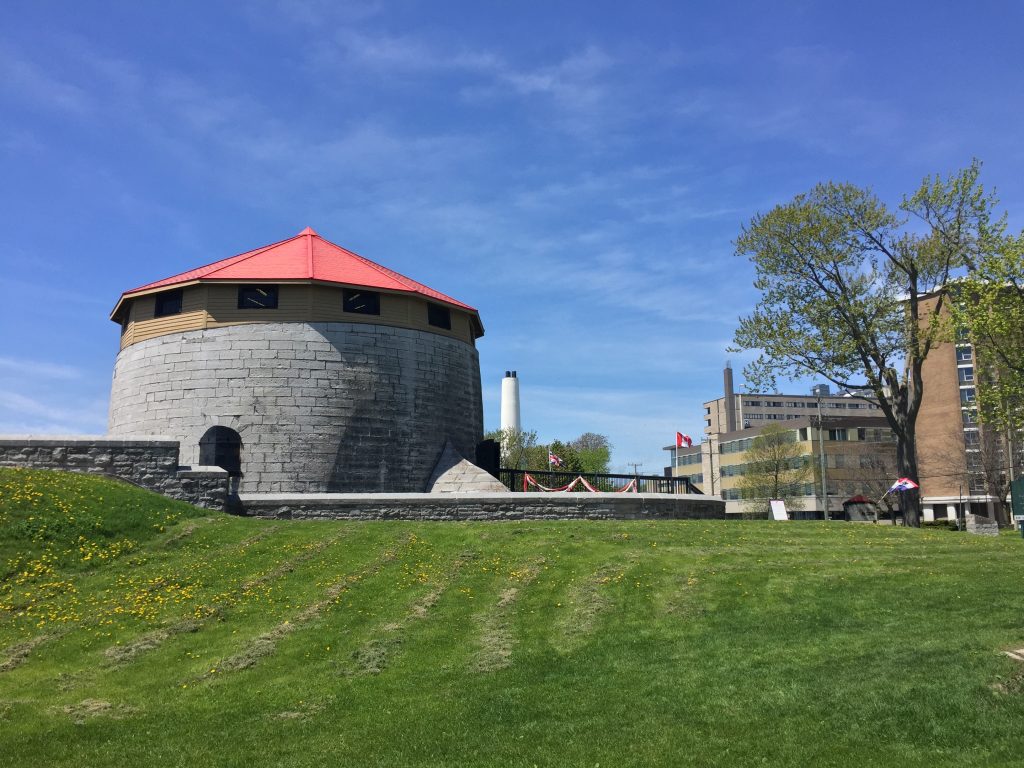
My primary project as the Collections Management Assistant was to work on the Murney Tower Museum (MTM) Digitization Project by migrating MTM’s paper-based collection system to a digital database. The goal of this project is to not only make the MTM collection more accessible, but also support MTM’s inventory overhaul, deaccessioning objectives, and future exhibitions.
In completing my primary duties I:
- Researched program options for free collection databases, leading to the selection and installation of a digital collections database that meets the current needs of MTM
- Pieced together artifact provenance, location, description, history, condition, and photographs from various paper and digital sources, resulting in the entry of 541 objects into the database (this includes two full collections)
- Worked with the Curator to create a new filing system for the paper physical object files that involved the rehousing of documents into folders with consistent naming conventions and then their arrangement into a filing cabinet
- Implemented a backup policy to aid in the preservation of digital physical object files and the new digital system
- Generated a database importing and exporting policy that has helped overcome the single network drawbacks of the selected collections database
- Created an easy-to-read and piloted 56-page guide for the MTM Digitization Project that will help in the sustainability and continuation of the project
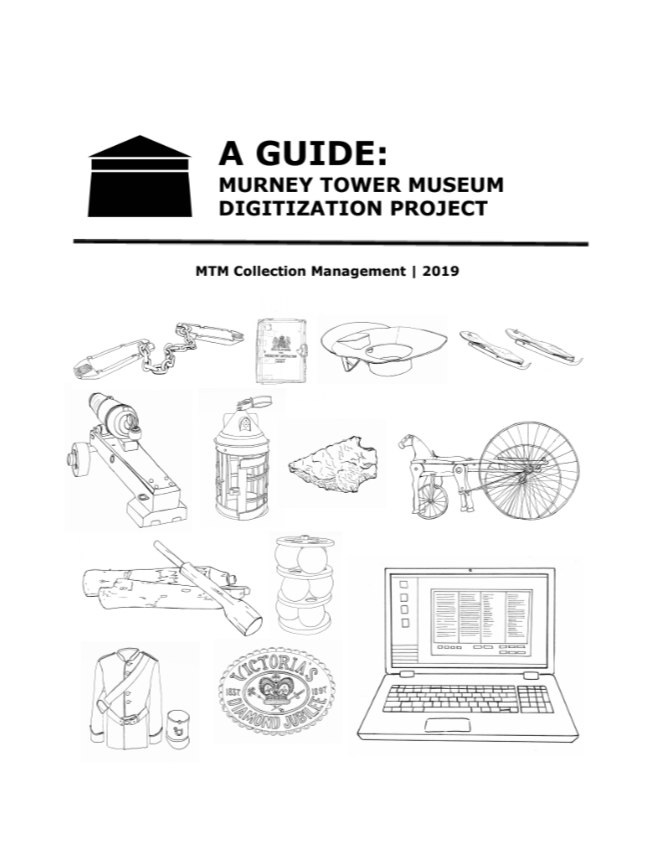
My secondary duties include helping train new staff; assisting with pre-season cleaning of the Tower; filling in when there are front-line staff shortages; and helping the Curator as needed.
My work at MTM not only assisted with the Museum's efforts towards alignment with Community Museum Operating Standards in Ontario, but also earned me the 2018-2019 iSchool MAS Co-op Student of the Year award.
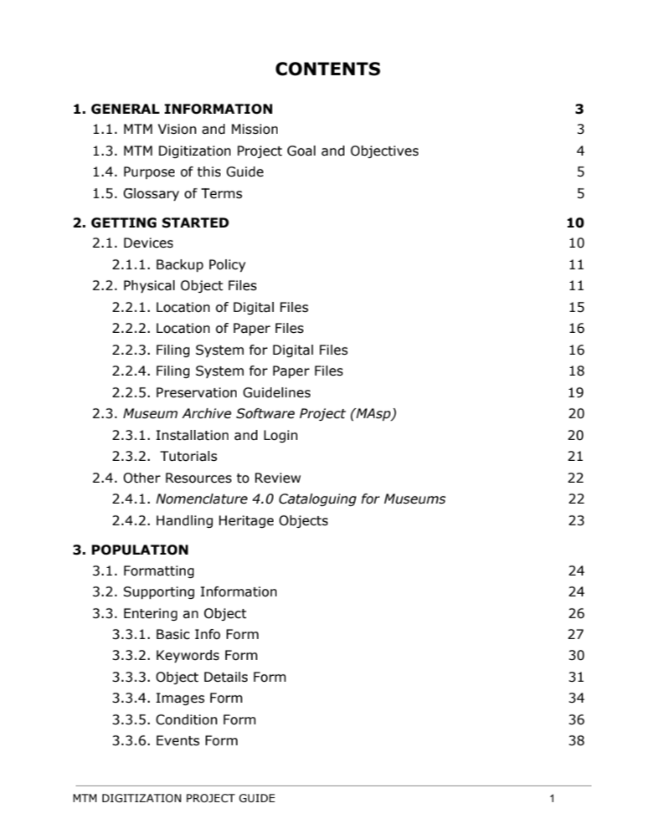
During my work term I was able to develop and gain some valuable skills. These include the following:
Database Management: A hard skill that I developed was database management for a small museum. My experience selecting and setting up the premium edition of Museum Archive software taught me about essential collection management database features and how to adjust database presets to meet the needs of the collection. Populating the database taught me how to create digital object files that include everything from accessioning to disposition information and adhere to Nomenclature 4.0, a museum cataloguing standard. Prior to this position, I had no experience using museum standards nor managing collections database software for museums.
Initiative: Being a small, non-profit museum, MTM relies on the resourcefulness of dedicated volunteers and a handful of employees. As a result, I had the opportunity to develop more initiative. For instance, in the first week of my work term, the Curator and I discovered that the open-source database that was initially selected for the project had back-end costs. It was also heavy in developer language, making it unsuitable for volunteers and student interns. I took on the task of researching a new database program that suited the needs of MTM. Thorough research of different program features, reviews, and free demos; the creation of pro/con lists; and ongoing communication with the Curator, allowed us to make an informed selection. Additionally, I assisted the Curator with exhibition installation by taking the lead on the display of the first MTM guestbook from 1925. I applied what I learned from my studies at the UBC iSchool to build and install an affordable, acid-free book mount that adequately supports the guestbook’s structure (see images below for the process and final display). Later in my work term, I applied this same skills to create a second book mount for the MTM accession book, which is a 18th century bankers book.
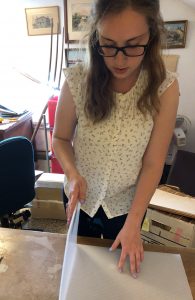
Diligence: Another important soft skill that I developed was diligence. Searching through the numerous physical object files to piece together object histories requires thoroughness and attentiveness. The same diligence is needed when preserving the artifacts and the physical object files. This included little details like ensuring storage and display materials are acid-free and lignin-free, using pencil, removing staples and paperclips, and handling artifacts and records with care. This diligence is extended to the digital database, as I also established a backup schedule. The thoroughness of the 56-page user guide further illustrates this diligence. The Guide contains six sections, each with its own subsections (see Figure 2 for the contents of the Guide).

Peer Mentorship/ Leadership: Training the three new summer Historical Interpreters in museum operations allowed me to develop my peer mentorship and leadership skills. I was able to use my previous experience as a Historical Interpreter and my knowledge from my studies to provide support to these individuals in their new positions and as undergraduate students with specific research interests. Providing some assistance with the digitization project, the summer staff also reviewed select object files and piloted the Guide. In my leadership role, I selected object files for everyone based on their topics for their individual museum projects and interests. Early in my work term I also provided them each with a basic database guide and encouraged an open line of communication.
During my work term I faced and overcame the following major challenges:
Scope and Perfectionism: The initial goal of my work term was to have at least 75% of the physical object files in the database by the end of my work term. However, after reviewing the files, the scope of objects both in and removed from the MTM collection is greater than anticipated. After discussing this with the Curator, we decided to adjust my work term goals to accommodate this change. Additionally, working with multiple sources and incomplete records, I found it challenging to accept that some information about an artifact is simply unknown and some fields in the database cannot be filled (even some database required fields). This caused me to focus too much on single objects. A discussion with my supervisor about this need for perfectionism reassured me that sometimes leaving database fields empty is the best choice as theory does not always equal practice.
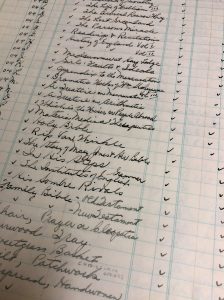
Writing Style: Another challenge was adjusting my writing style for the database entries and user guide. Both required me to change my verbose and academic writing style to a more clear and concise style. Research into examples of user guides and training manuals proved useful. Moreover, the character limit in database fields encouraged me to write more concisely. Support from the Historical Interpreters, the Curator, and my UBC Arts Co-op Coordinator in the form of piloting, feedback, and editing, proved to be invaluable.
My position was funded by the City of Kingston Heritage Fund, Murney Tower Museum National Historic Site of Canada, the Kingston Historical Society, and the Kingston Association of Museums, Art Galleries and Historic Sites.
